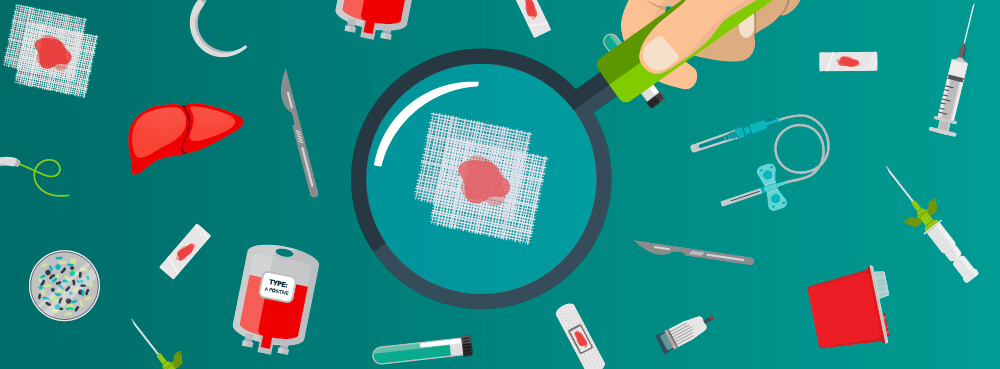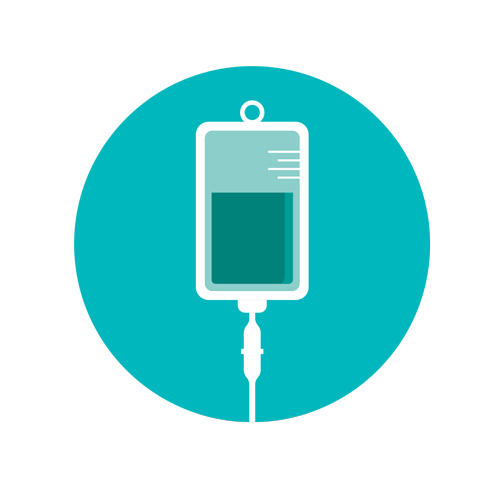How to Define and Identify Medical Waste Streams

All medical waste is created equal, right? Wrong. Medical facilities can produce different kinds of medical waste, known as a waste stream, and each medical waste stream has its own unique requirements for legal and safe handling, storage, and disposal.
Understanding waste streams is the first step toward training your staff to properly collect and dispose of medical waste in your hospital, clinic, outpatient surgical center, or dental office. Knowing the proper rules and regulations for each waste stream will keep you compliant andsafe while protecting the environment.
TOPICS WE WILL COVER:
1 / Identifying types of Medical Waste
4 / Biohazardous Medical Waste
5 / Trace vs. Bulk Chemotherapy Waste
Identifying Types of Medical Waste 
Waste streams are broken down into categories. A medical waste can be a regulated waste or a hazardous waste. It can be waste from pharmaceuticals or chemotherapy drugs. It can also be infectious or biohazardous, or it can come from sharps – needles, surgical tools, broken lab slides, and so forth. Not all facilities or healthcare providers will produce the same type of waste.
A brief background on some of the medical waste streams is a starting point for proper medical waste segregation. Every employee in a facility that offers medical care, from top management to janitorial services, should be able to identify waste streams.
Keep in mind that the regulations of the federal government and state governments must be followed when it comes to medical waste management and disposal processes.
Regulated medical waste
Regulated Medical Waste (RMW) is defined at the state level, and healthcare workers at any medical or healthcare facility, regardless of size, should be able to define RMW as it is understood in their state. Although the Environmental Protection Agency (EPA) does not currently have authority to regulate medical waste, its definition provides a good overview. The EPA defines medical waste as “any solid waste which is generated in the diagnosis, treatment, or immunization of human beings or animals.”
In a nutshell, a regulated medical waste is something that has the potential to be contaminated with a possible infectious material, such as blood or body fluids. When looking at individual examples, it can be difficult to determine what exactly defines an infectious, biohazard, or hazardous waste, and if such wastes are regulated. If unsure, ask a simple question – does the waste drip, pour, or flake, even when it has dried? If your answer is yes, then it’s a regulated medical waste.
When it comes to the basic “drippable, pourable, squeezable, or flakeable” definition of a regulated medical waste, knowledge of the law and definitions for different waste stream characteristics are essential. However, something doesn’t have to be fully saturated or “dripping” to be deemed potentially hazardous or an infectious waste that might be contaminated with pathogens.
State by state regulations define RMW categories and may differ slightly in wording, but regulated medical wastes typically include:
- Human blood and blood products
- Contaminated sharps
- Cultures and stocks of infectious agents (microbiological waste)
- Pathological waste
- Isolation waste
Refer to federal and state guidelines for specific definitions between regulated medical waste streams such as pathological waste, infectious waste, anatomical waste, or surgical waste. Segregation of waste streams requires proper identification and separation of different types of medical waste.
Infectious medical waste
Infectious waste is defined as any waste product or organism typically generated in healthcare scenarios or health related industries capable of producing infection or an infectious disease in humans.Infectious waste can include but is not limited to:
in humans.Infectious waste can include but is not limited to:
- Laboratory waste
- Sharps
- Blood
- Pathological waste
- Chemotherapy waste
- Materials contaminated with a communicable disease
Again be aware that each state also has its own recommendations for handling such medical waste. For example, in some states, teeth might be classified as an infectious waste. You must refer to state and local regulatory agencies for specifics. That said, infectious waste collection, packaging, and disposal processes must be followed to protect employees, the general public, and the environment.
Biohazard medical waste
In many cases, an infectious waste is a biohazard waste or vice-versa. While specific definitions of biohazard waste and biohazard waste disposal may differ slightly in regard to wording, the basic definition of biohazard waste is anything that has the potential to cause harm, infection, or contamination of a dangerous agent to humans. This can include:
- Anatomical waste – specimens or a tissue removed during an autopsy or surgical procedure that might also be contaminated by an infectious agent that may be dangerous to health. This category is often referred to as pathological waste.
- Animal parts – carcasses, tissues, and fluids that possibly contain infectious agents that may pose a risk to humans.
- Laboratory waste – specimen cultures, bacteria, parasites, viruses, or other microorganisms that increase the risk of contamination, morbidity, or mortality.
- Infectious waste – again meaning any type of waste that contains blood, fluids from blood products or components used in the treatment of animal or human that may be contaminated or infected with a disease communicable to humans.
- Sharps waste – not just needles but surgical knives, scalpels, infusion sets, broken glass, and syringes.
- Solid wastes – such as bandages and dressings contaminated with blood or other body fluids. These might also include a cast that has been contaminated with sweat or blood.
- Pharmaceuticals – such as cancer chemotherapy or antineoplastic drugs. This category can also include x-rays and tar-based products. It may also refer to bottled medicines that are either no longer needed for patient care or that have expired.
Special care must be taken when disposing of chemotherapy waste based on its type.
Trace vs. Bulk chemotherapy waste
Chemotherapy waste must be properly segregated and disposed of as either “trace” or “bulk” waste depending on content of the waste and the total amount remaining. Understanding the difference between trace and bulk chemotherapy waste is critical because bulk waste is considered hazardous, and disposing of anything that may have been exposed to chemotherapy drugs, regardless of waste type, renders all that waste hazardous.
Chemotherapy waste that is not defined as “RCRA empty” is considered “bulk” and should always be handled as hazardous waste. When chemotherapy waste is RCRA empty, it is considered trace chemotheraphy waste. RCRA empty means, among other things, that there is no more than 2.5 cm (or one inch) of residue that remains in the bottom of a container or an inner liner or that “no more than 3% by weight of the total capacity of the container remains in the container or inner liner.” Turn to 40 CFR 261.7 (Residues of hazardous waste in empty containers) for a more detailed explanation.
Biohazard Levels
The Centers for Disease Control (CDC) defines four biohazard levels:
- Level I: Something that triggers minimal threats to either humans or the environment. An example could be E. coli.
- Level II: Something that is spread through direct contact with an infected material that can also cause illness in humans, such as HIV, hepatitis B, or Salmonella.
- Level III: A pathogen with the potential to become airborne and cause a disease. Tuberculosis is an example of such a pathogen.
- Level IV: A pathogen that triggers risk of life-threatening diseases for which there are no current treatments, like the Ebola virus.
Daniels Health guidance for regulated medical waste
At Daniels, we know that it’s not always easy to understand federal and state codes and regulations. That’s why we’re dedicated to providing support and resources for medical waste generators. Medical waste segregation is only the first step to healthcare waste management. For more information on how Daniels Health can help your facility maintain compliance with medical waste disposal processes, call us today.
Let's Talk!
Your time is valuable, and we don’t want to play hard to get. You can either phone us directly on the details listed on our contact page, or feel free to fill out this short form and one of our team members will get back to you as quickly as possible.

